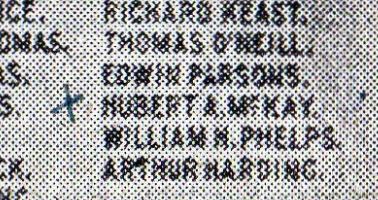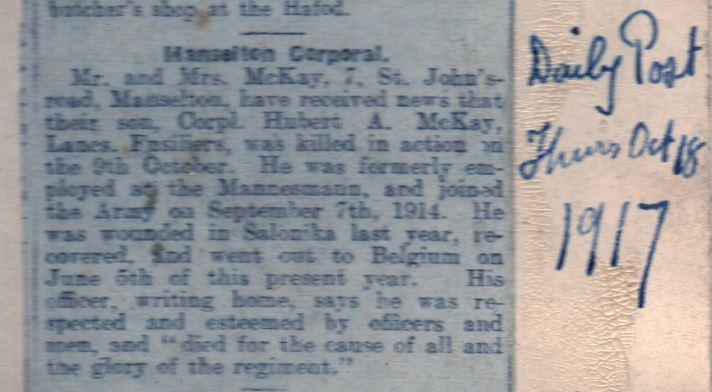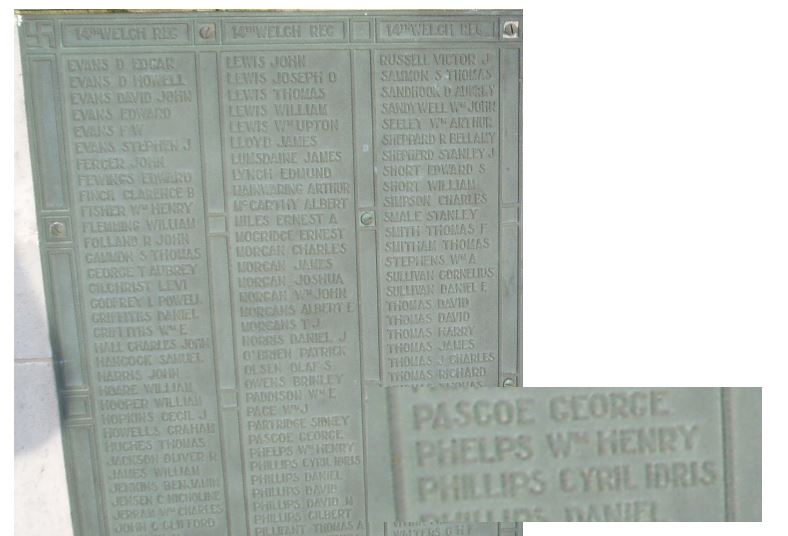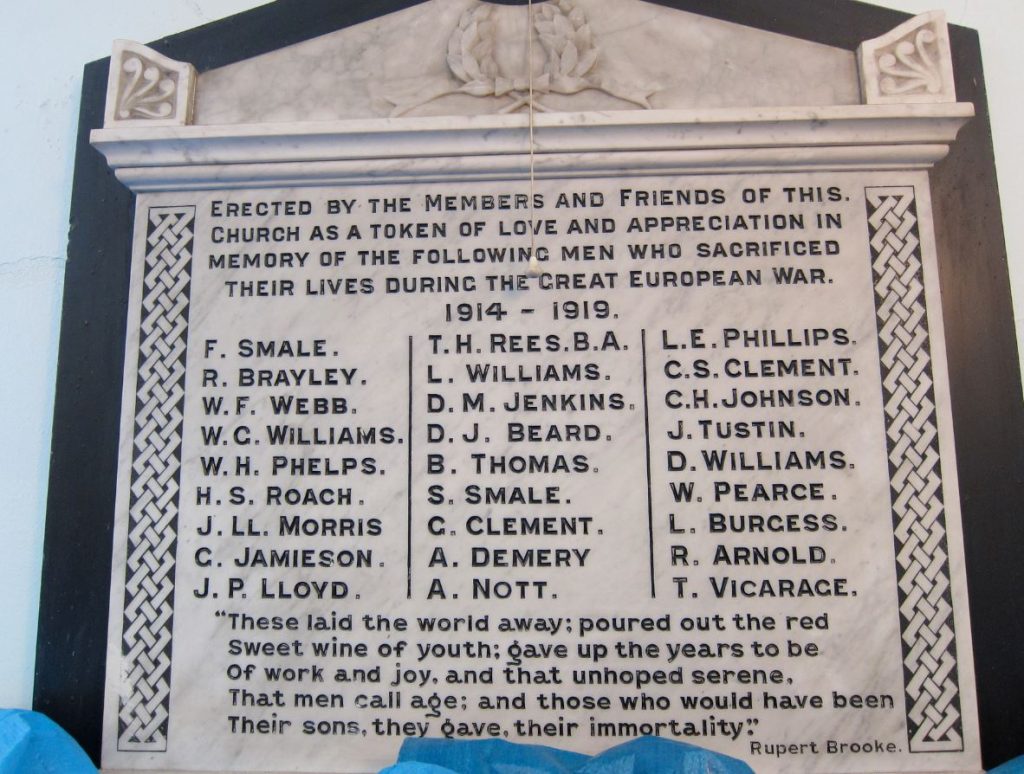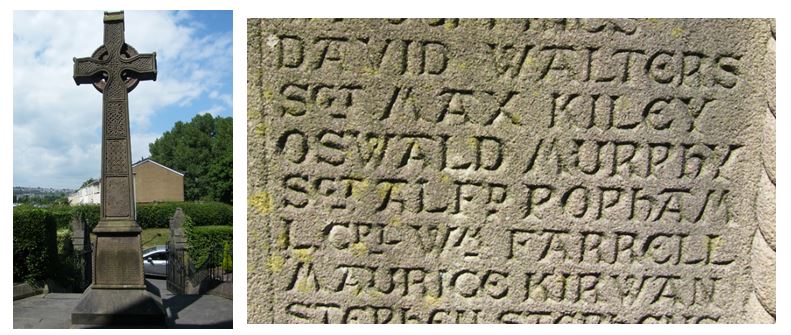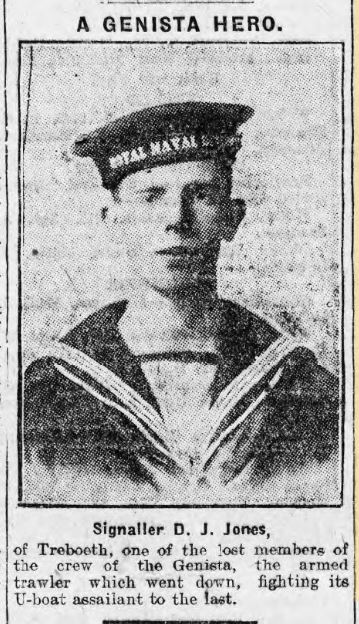The Mannesmann Memorial, Swansea
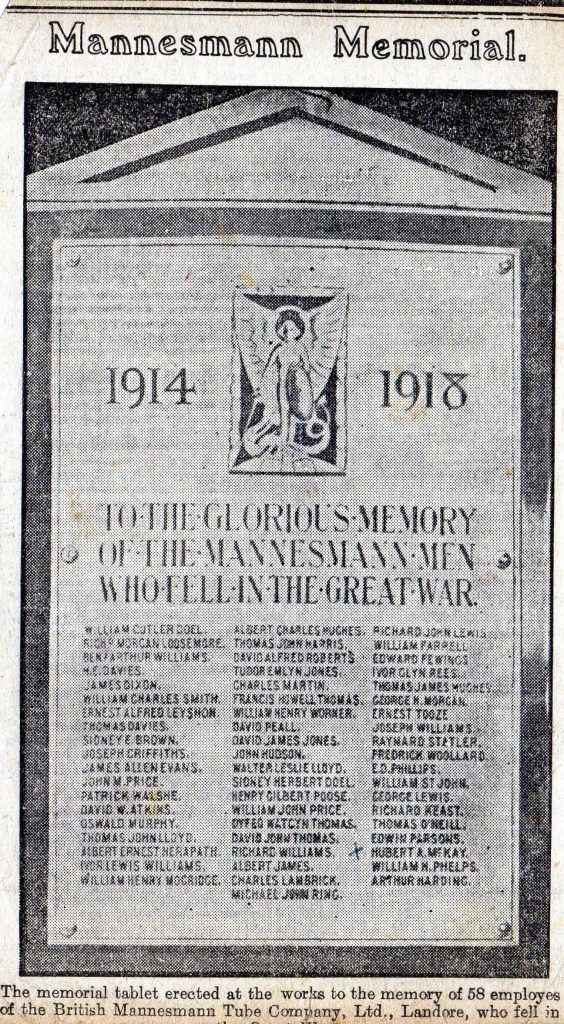 I have recently been sent an image of the World War One memorial to the war dead who had previously worked for the British Mannesmann Company, based in Landore, Swansea (with thanks to Bernard Lewis and Pam McKay). The works is long gone and so also, presumably, is this memorial. However, the family of Hubert McKay have kept this cutting from the South Wales Daily Post, probably from 1922 or 1923, which records the unveiling of the memorial. If you look at the image you will see where the family have put an ‘X’ next to Hubert’s name.
I have recently been sent an image of the World War One memorial to the war dead who had previously worked for the British Mannesmann Company, based in Landore, Swansea (with thanks to Bernard Lewis and Pam McKay). The works is long gone and so also, presumably, is this memorial. However, the family of Hubert McKay have kept this cutting from the South Wales Daily Post, probably from 1922 or 1923, which records the unveiling of the memorial. If you look at the image you will see where the family have put an ‘X’ next to Hubert’s name.
The number of men who were killed in action, 58, is breath-taking – or rather, heart-breaking. There were 1,600 men employed by the company in 1914, so in bald figures over one in 27 of them died as a result of the war.
Looking beyond the figures it does appear that there is more to this story. The Swansea newspapers, which accepted the line in 1914 that this was a just war, were enthusiastic about publicising which companies were doing the most to get their workers to volunteer. They published lists showing how many men had enlisted from different companies, and the ‘winner’ in this competition, by a large margin, was the British Mannesmann Tube Company. The list published by the Cambria Daily Leader on 14 September 1914 has 210 names of those from the company who were ‘doing their duty’. Many of these names – including Hubert McKay – are on the list of those who died.
So why were the men of the company so keen to volunteer? Does it have anything to do with the fact that the parent company was German? There is a report in a newspaper at the start of the war noting that the two sons of Mr Roeder, manager of the works, were going back to Germany to fight for their country. Given all the pressure for companies to show their loyalty to King and Country, did that then mean that the Mannesmann works was particularly eager to supply as many volunteers as possible for the Colours?
The McKay family have kept a cutting from the South Wales Daily Post of 18 October 1917 recording the death of Hubert, killed in action in Belgium on 9 October. His officer wrote that he ‘died for the cause of all and the glory of the regiment.’ He has no known grave, being commemorated on the Tyne Cot Memorial.
Information on many of the other men can be found in the pages of the Swansea newspapers (which are available online). John M. Price was killed on New Year’s Day 1915 at Festubert. William Doel died in the vicinity of Loos on 11 May 1916; his brother Sydney died in the Somme campaign on 28 September 1916. Oswald Murphy was killed on 27 December 1916. Fredrick Woolard (named in the paper as Fred Wallard) was on the Laurentic when she was sunk after striking two mines on 25 January 1917.
There are also a number of men who are reported as former Mannesmann employees whose names do not appear on this memorial. James Keefe, a veteran who had served in the Boer War, rejoined the army as an instructor, but died of an illness in November 1915. Richard William Thomas was 19 years old when he was killed in a Flanders field in October 1917. Thomas Ivor Jones was 20 years old when he died on the Western Front in September 1918.
Most of the 58 men listed here are commemorated on the Swansea Cenotaph, where 2,274 dead of the First World War are named. The image above shows the name of William Henry Phelps, who was killed in the attack on Mametz Wood on 10 July 1916, while serving with the 14th Btn Welsh Regt (the ‘Swansea Pals’). He is also commemorated in the memorial to the WW1 dead from Carmarthen Road Congregational chapel, Swansea.
Oswald Murphy’s name appears among the 120 names on the WW1 memorial outside the Roman Catholic Cathedral Church of St Joseph.
One who is commemorated on another chapel memorial is
David James Jones, 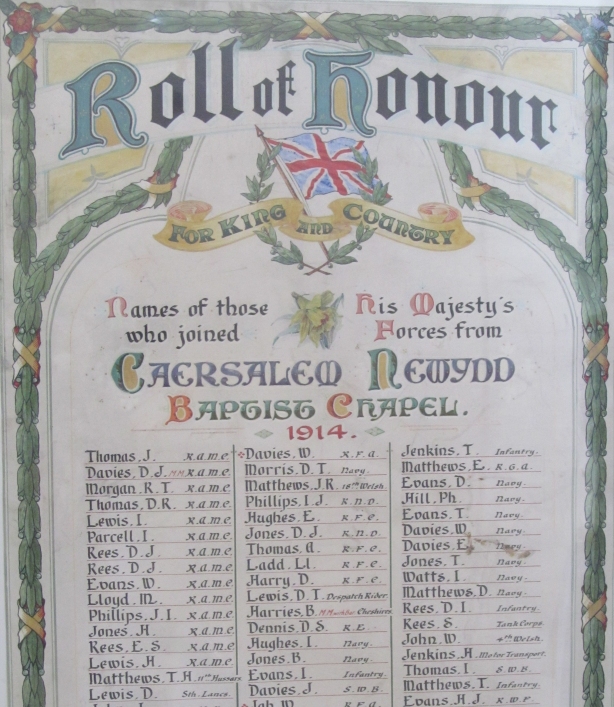 named on the Roll of Honour at Caersalem Newydd, Treboeth. He was killed when HMS Genista was sunk by a U-boat in October 1916. The newspaper says of him that he ‘was a lad who promised to have a successful career. He was a boy who was exceptionally popular and his tragic death will be mourned by a large circle.’ To get an idea of the effect of the war on the workers at the Mannesmann company, we can multiply that sentiment by 58 and more.
named on the Roll of Honour at Caersalem Newydd, Treboeth. He was killed when HMS Genista was sunk by a U-boat in October 1916. The newspaper says of him that he ‘was a lad who promised to have a successful career. He was a boy who was exceptionally popular and his tragic death will be mourned by a large circle.’ To get an idea of the effect of the war on the workers at the Mannesmann company, we can multiply that sentiment by 58 and more.
g.h.matthews June 11th, 2018
Posted In: Uncategorized
